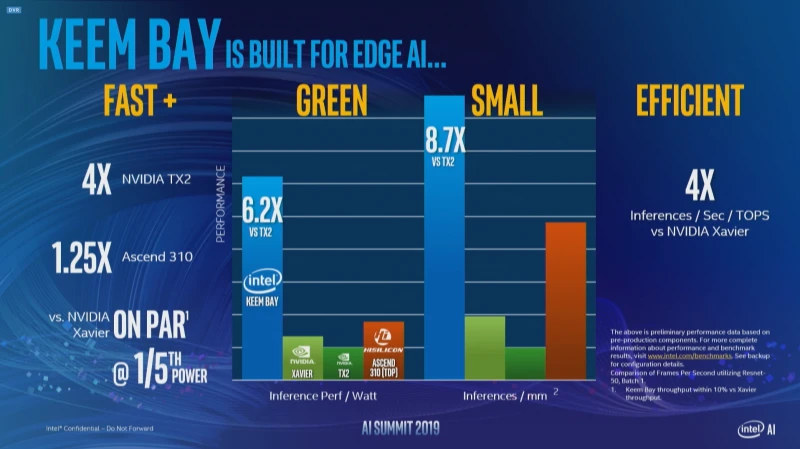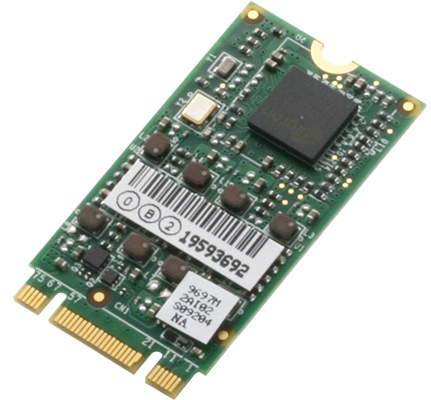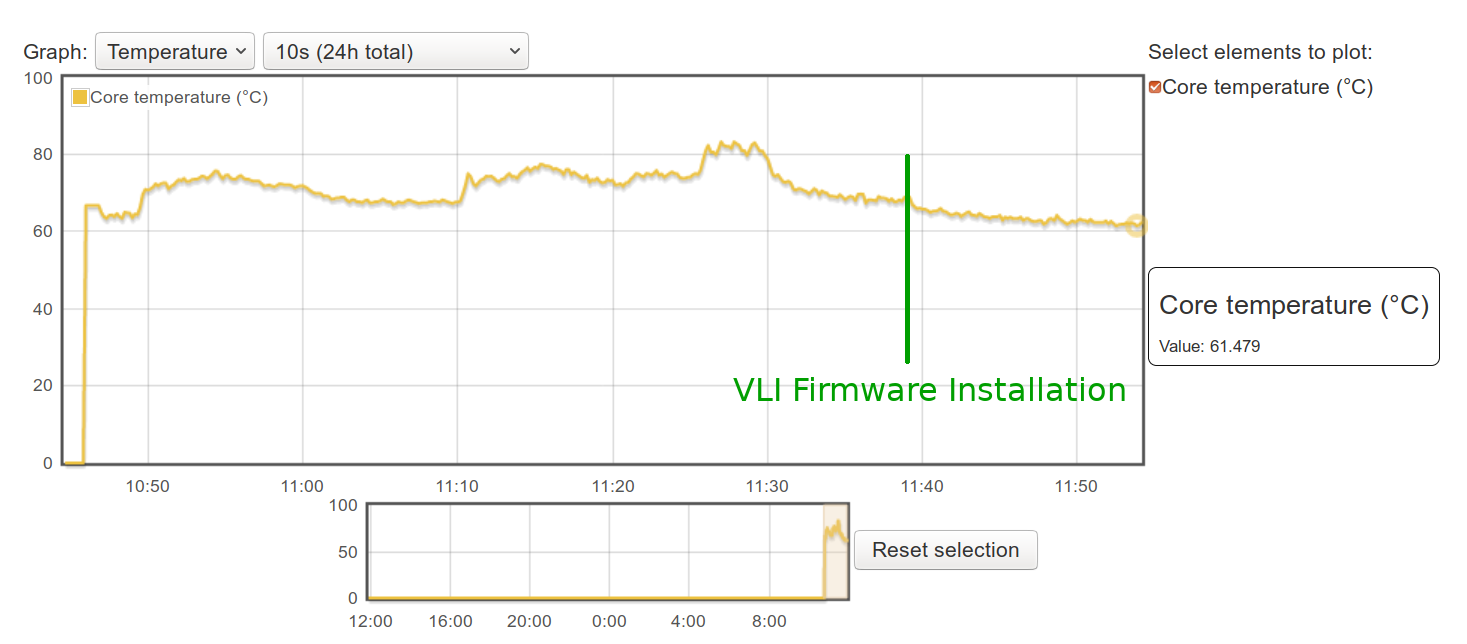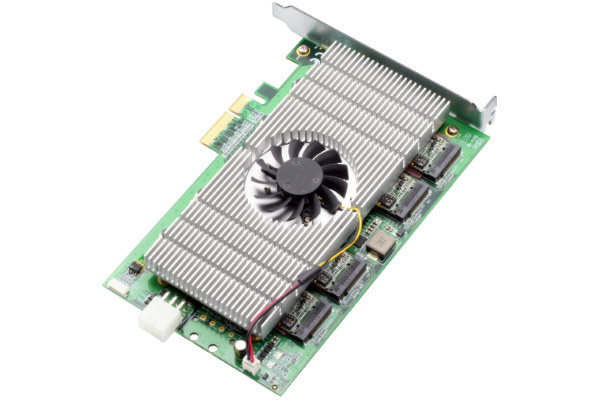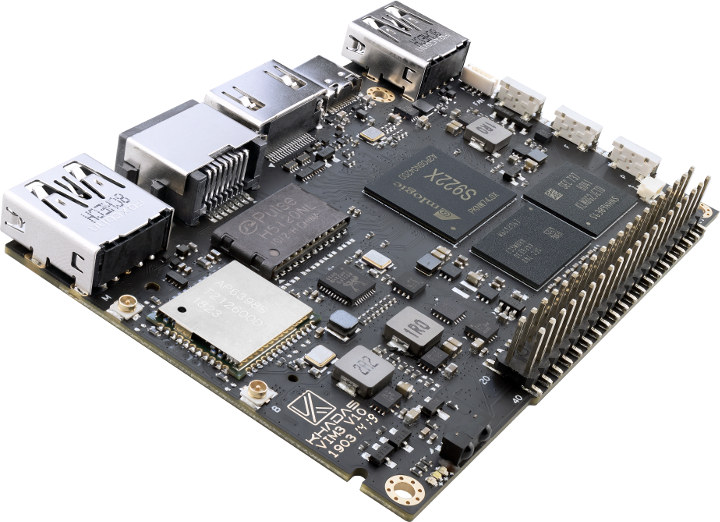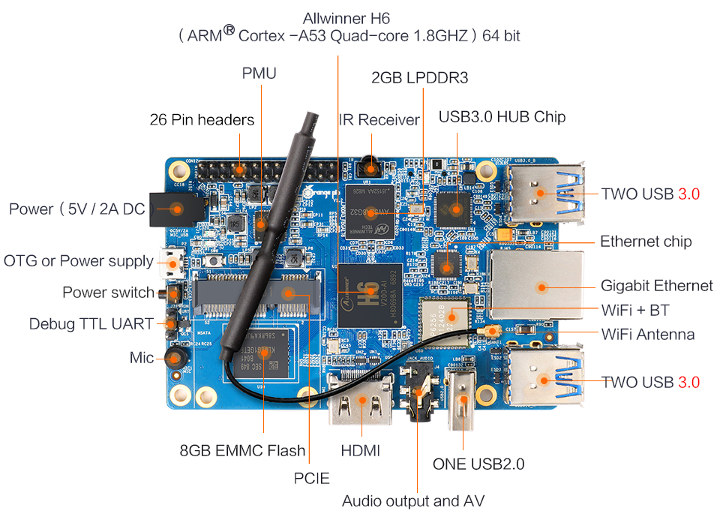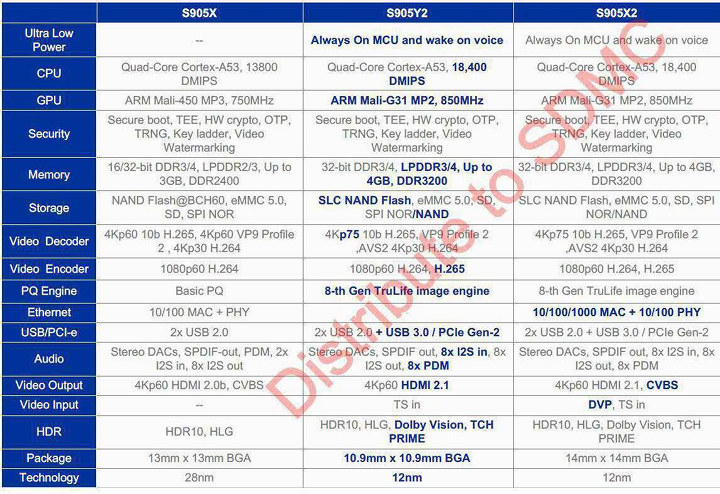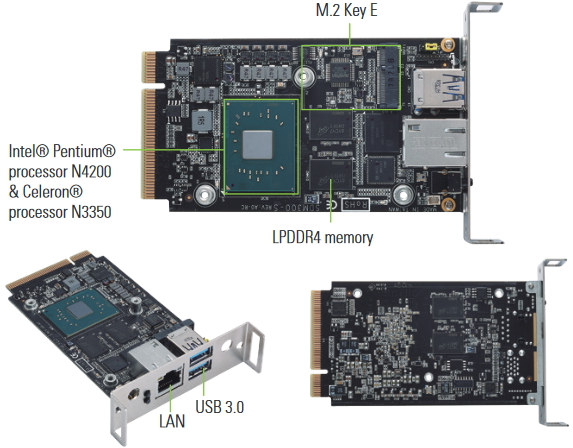Intel made announcements about upcoming AI solutions at 2019 Intel AI Summit. Those include Intel Nervana Neural Network Processors (NNP) for training (NNP-T1000) and inference (NNP-I1000) for cloud and data center customers, as well as Gen 3 Intel Movidis “Keem Bay” VPU. We’ll focus on the latter in this post with Intel claiming similar performance as NVIDIA Jetson AGX Xavier at much lower power consumption with claims of up to 4.7 times more power efficiency when using ResNet-50 benchmark inference measurement using INT8 with a batch size of 1. Considering Jetson Xavier AGX has a ~30W power budget, that would mean Movidius “Keem Bay” consumes around 6 Watts. Compared to Myriad X MA2085, the new Gen3 VPU is said to have more than 10 times the inference performance. Intel did not provide any TOPS figure, but considering the company announced 1 TOPS of neural compute performance for Myriad X, one […]
AAEON M.2 and mPCIe Cards for AIoT Acceleration Run Kneron KL520 AI SoC
The AAEON announcement of its AI Acceleration M.2 and mini-PCIe cards AAEON uses Kneron KL520 AI SoC dual Cortex-M4 on a series of new modules that are accelerating AI edge computing and that only need 0.5 Watt of power. The modules are M.2 and mini-PCIe AI acceleration cards, that offer a new way to come at AI acceleration. What AI Features are Enhanced The cards are meant to enhance and accelerate AI functions, like gesture detection, facial and object recognition, driver behavior in such AIoT areas as access control, automation, and security. History of the AAEON Development Previously AAEON has been offering the M.2 and mini-PCIe AI core modules for the Boxer computers that are based on the Intel Movidius Myriad 2 and Myriad X Vision Processing Units (VPU). Reporting was done on these previous releases in the articles on the UP AI core mini-PCIe card and the AI Core […]
New Raspberry Pi 4 VLI Firmware Lowers Temperature by 3-5°C
The other day I tested Raspberry Pi 4 with an heatsink since previous multi-threaded benchmarks clearly made the board throttle when running those without any cooling solution. The guys at the Raspberry Pi Foundation somehow noticed my post, and I received an email from Eben Upton explaining a new Raspberry Pi 4 VLI firmware had “some thermal optimizations that are not installed by default on early production units.” I did not understand VLI at first, but eventually understood this referred to the firmware for VIA VL805 PCIe USB 3.0 controller on the board. The Raspberry Pi Foundation provided me with a test version of the firmware, which they’ll release in the next few days, or weeks after testing is completed. Now if you’re going to test a platform that will throttle due to overheating, it’s very important you do so at constant room temperature. I work in a office where […]
AAEON AI Core XP4/XP8 PCIe Card Combines up to 8 Myriad X VPU’s
Movidius Myriad X is Intel’s latest vision processing unit (VPU) first unveiled in 2017, and available for evaluation in Intel Neural Compute Stick 2 since the end of 2018. Later on, AAEON also launched their own AI Core XM2280 M.2 card equipped with two Myriad X 2485 VPU’s and capable of up to 200 fps (160 fps typical) inferences, thanks to over 2 TOPS of deep neural network (DNN) performance. But what if you need even more performance? The company has now launched AI Core XP4/XP8 card with either two or four AI Core XM2280 M.2 cards that can be connected into any computer or workstation with a PCIe x4 slot. AAEON AI Core XP4/XP8 specifications: 4x M.2 sockets for 2x or 4x M.2 2280 M-key cards with 2x Myriad X VPU’s and 2x 4Gbit LPDDR4x memory each Asmedia PCIe switch Cooling – Fan heatsink PCIe x4 standard full-length low […]
Khadas VIM3 Amlogic S922X Board to Support M.2 NVMe SSD, WiFi 5, and Bluetooth 5 Connectivity
Ever since the Amlogic S922X powered ODROID-N2 SBC launched last March, I keep reading praise for the processor and board which both deliver great performance at a relatively low price. Hardkernel was the only company that sold such a board so far, but this is about to change with some competition coming from Shenzhen Wesion with their upcoming Khadas VIM3 board that includes 2 to 4GB RAM, 16 to 32GB eMMC flash storage, a wireless module, support for M.2 NVMe SSD, and more. Even though more are planned in the future, two Khadas VIM3 models have been announced so far – Basic and Pro – with the following preliminary specifications: SoC – Amlogic S922X hexa-core processor with 4x Arm Cortex-A73 and 2x Cortex A53 cores, Arm Mali-G52 MP4 GPU, built-in Cortex-M4 core for “always-on” processing MCU – STMicro STM8S003 with Programmable EEPROM for power management, customizations, and boot media configuration […]
Orange Pi 3 Allwinner H6 SBC Comes with GbE, USB 3.0, mPCIe
When Shenzhen Xunlong Software launched their first Allwinner H6 development board, Orange Pi One Plus, many were disappointed as the board did not make use of some of the key features of H6 processor like USB 3.0 or PCIe, and RAM was limited to 1GB. A couple of weeks later, the company introduced Orange Pi Lite2 board with 802.11ac WiFi, a USB 3.0 port, HDMI 2.0a output, but no Gigabit Ethernet, nor PCIe interface, and again only 1 GB LPDDR3 memory. The good news is we now get a full-featured Allwinner H6 SBC thanks to Orange Pi 3 equipped with up to 2GB RAM, an optional 8GB eMMC flash, Gigabit Ethernet, 802.11ac WiFi 5, four USB 3.0 ports, HDMI 2.0a, a mPCIe slot, and more. There are four variants of the Orange Pi 3 board with either 1 or 2 GB RAM, with or without eMMC flash that share the […]
Comparison of S905X, S905X2, and S905Y2 Processors Specifications
We’ve known the main features of Amlogic S905Y2 and S905X2 processors namely an upgrade to an Arm Mali-G31MP2 GPU with OpenGLES 3.1, and support for USB 3. since last month, and TV boxes launched earlier this month with products such as Beelink GT1 Mini or A95X Plus. But we were still missing some parameters like the manufacturing process, max CPU and GPU frequencies, and so on. We now have all this information and some more thanks to an S905X/S905X2/S905Y2 comparison table released by SDMC a few days ago, and likely coming from Amlogic themselves. There actually more differences than I expected. Going from top to bottom in the comparison table above, the new processors feature an ultra-low power MCU core to be used for wake-word detection, and possibly other features. We did not get CPU frequency numbers per se, but since Amlogic released DMIPS values and Cortex A53 core scores […]
Axiomtek SDM300S is an Intel Apollo Lake Smart Display Module (SDM-S) for Digital Signage
Way back in 2010, Intel introduced the Open Pluggable Specification (OPS) defining mechanical and electrical parameters for players to be integrated into digital signage displays, with the goal of providing an easier upgrade path. Even if it was defined by Intel we’ve seem some Arm based OPS digital players such as the ones offered by ZidooLab. If you’ve checked out the latter link, you’ll know OPS players normally come with a case, and measure 180 x 119 x 30mm to comply with the specifications. But it turns out Intel also introduced a more compact card format for digital signage / displays with Intel SDM (Smart Display Module) available as SDM-S (Small: 60 mm x 100 mm x ~20 mm; up to ~10W TDP) or SDM-L (Large: 175 mm x 100 mm x ~20 mm; up to ~45W TDP) Axiomtek made one of those module with their SDM300S SDM-S module equipped with […]


